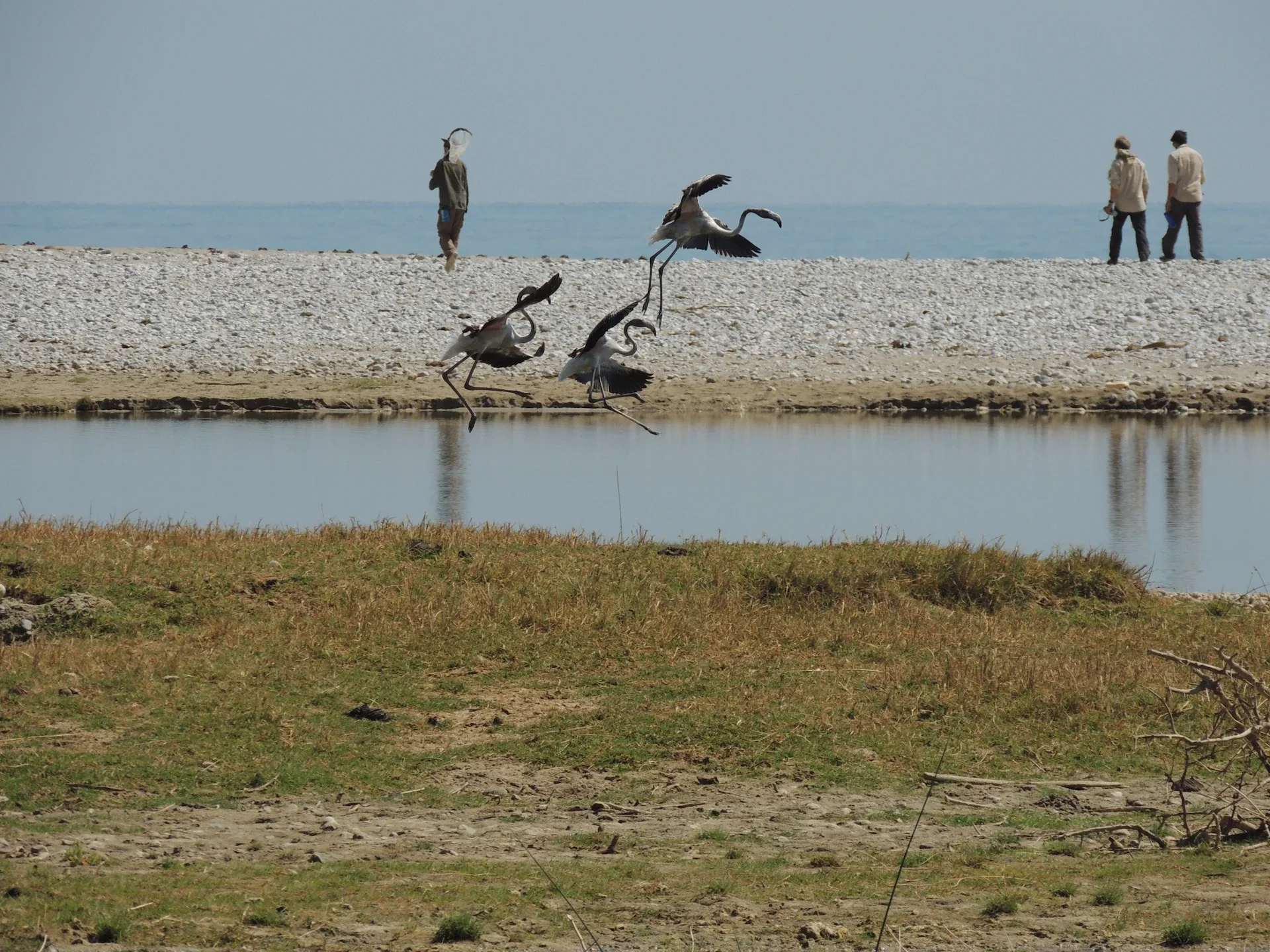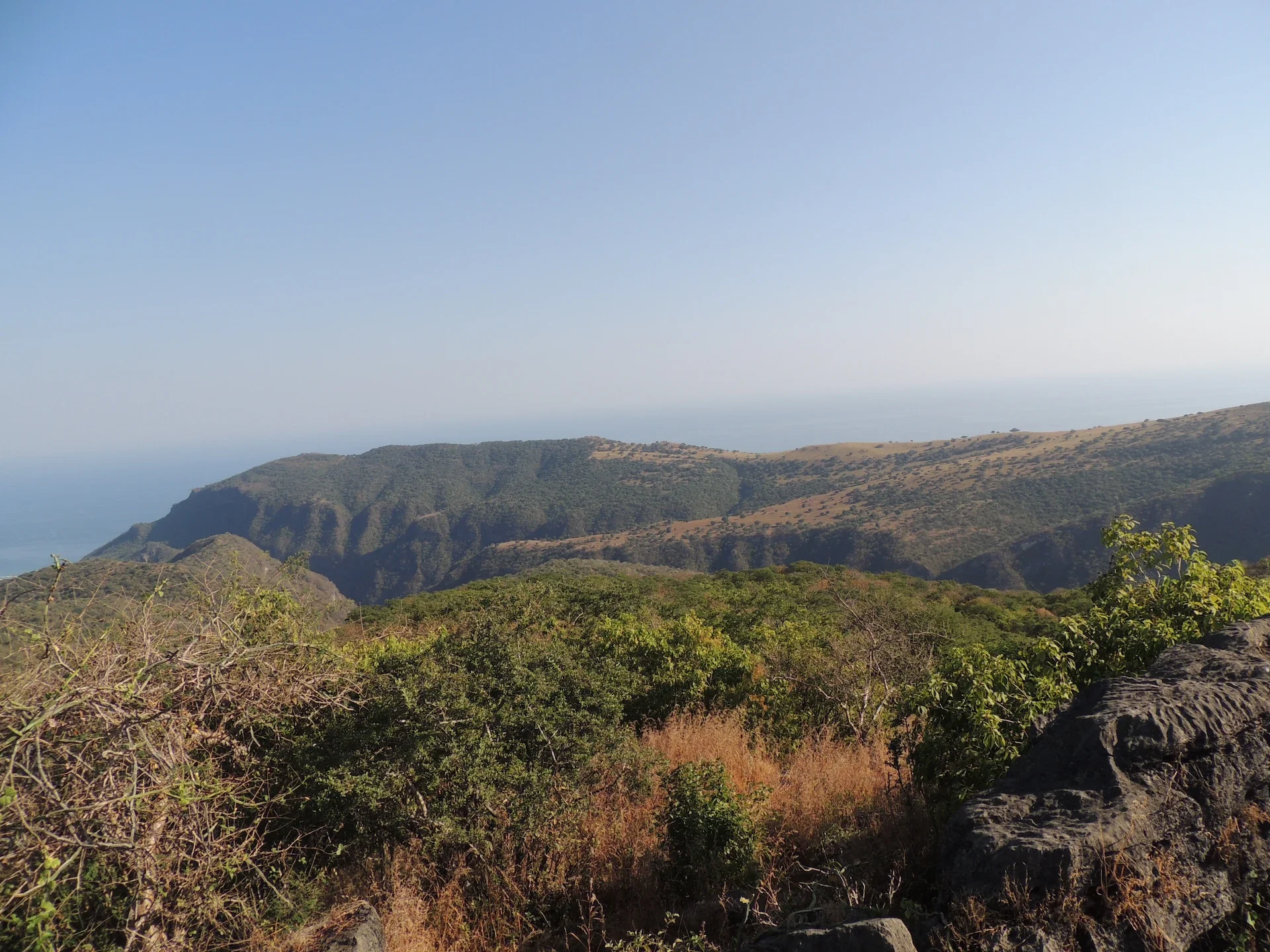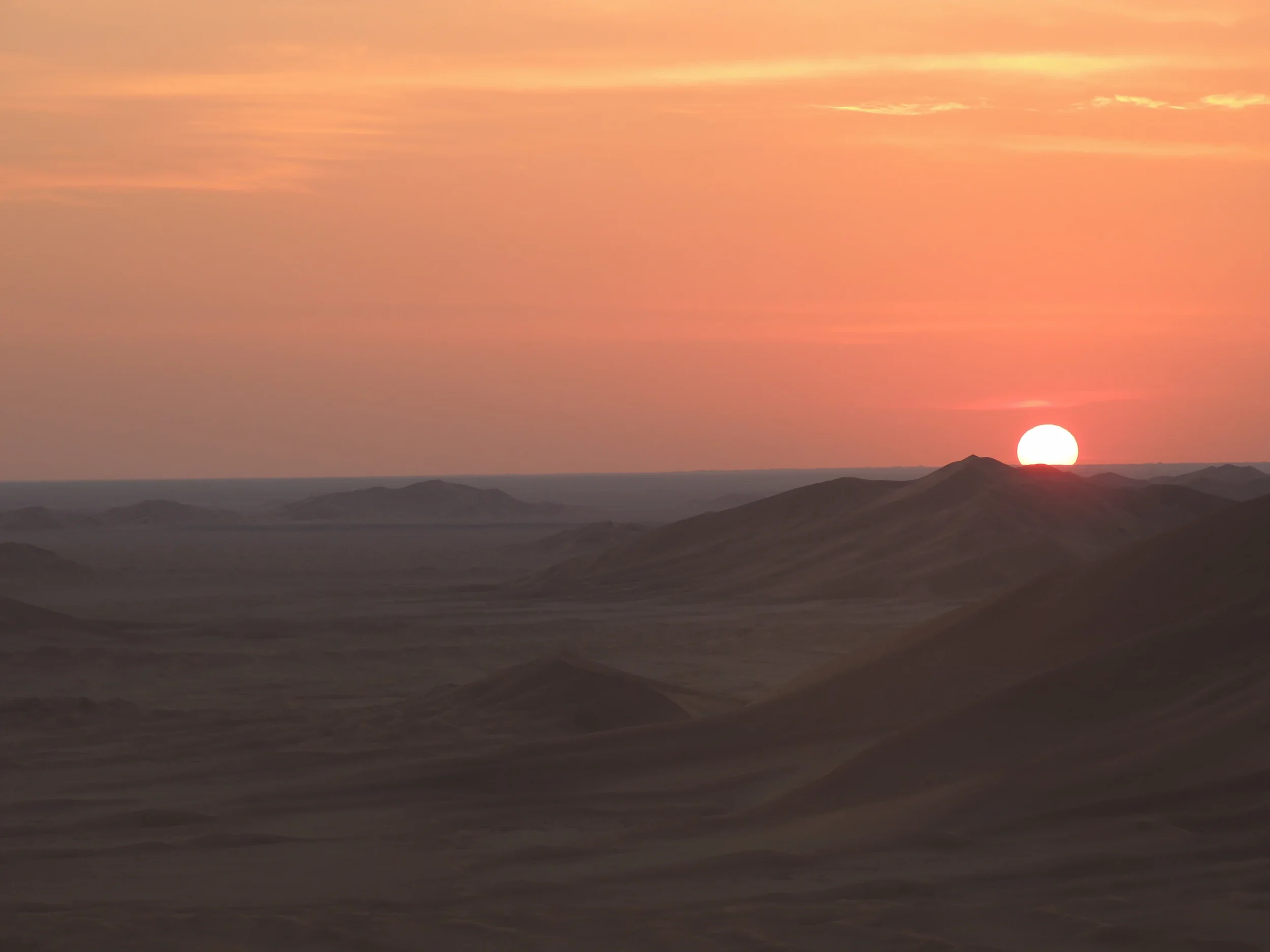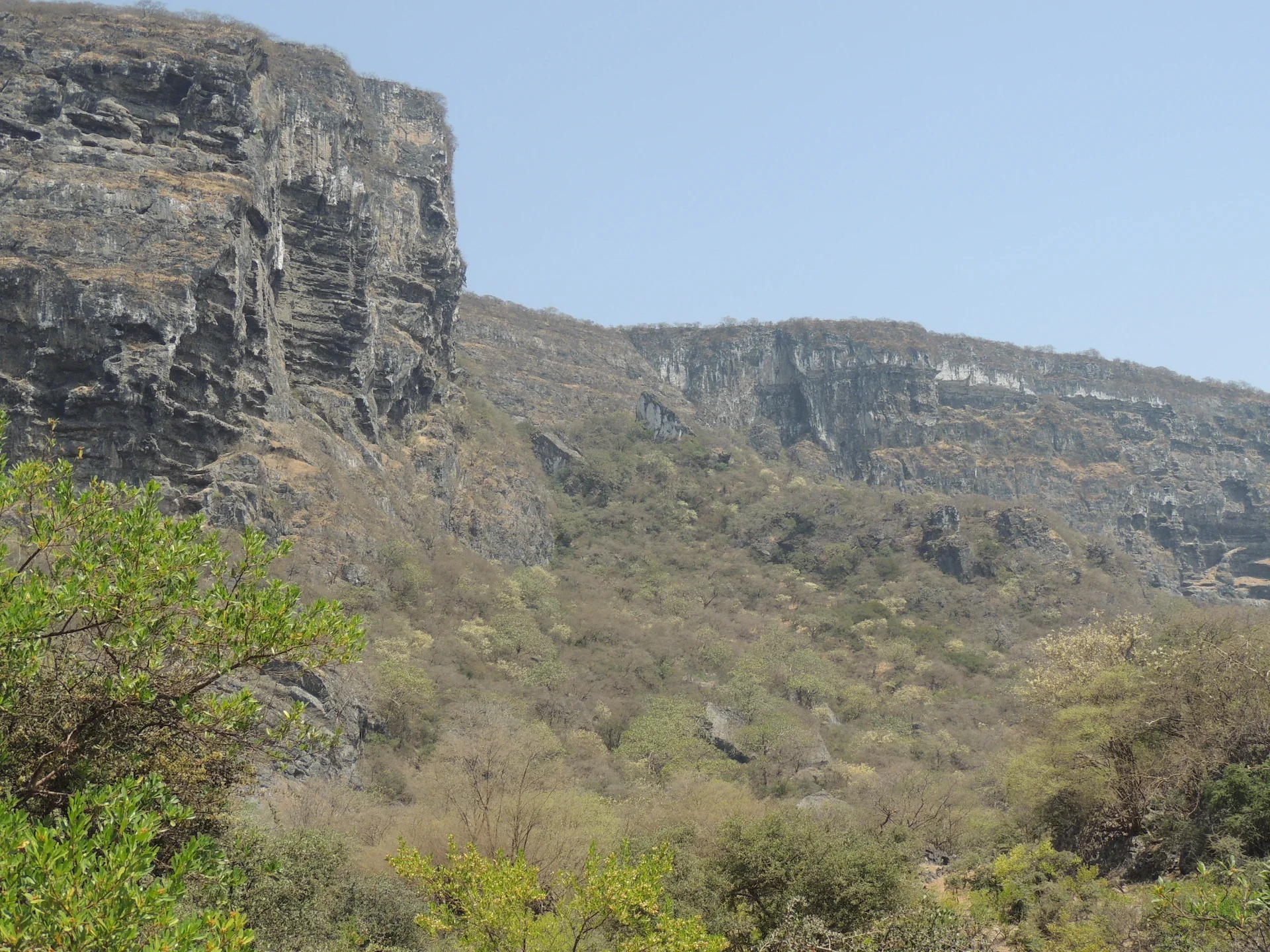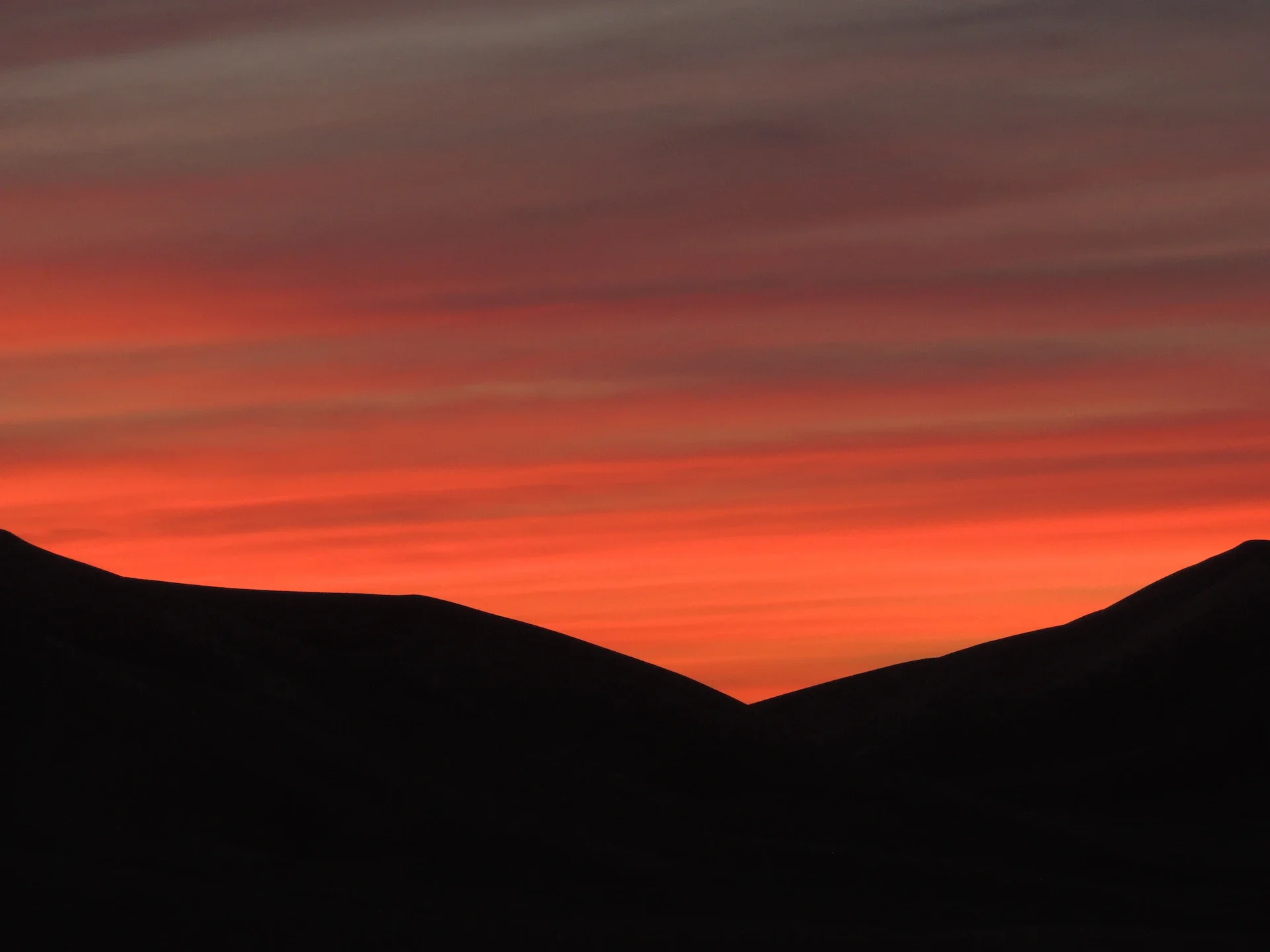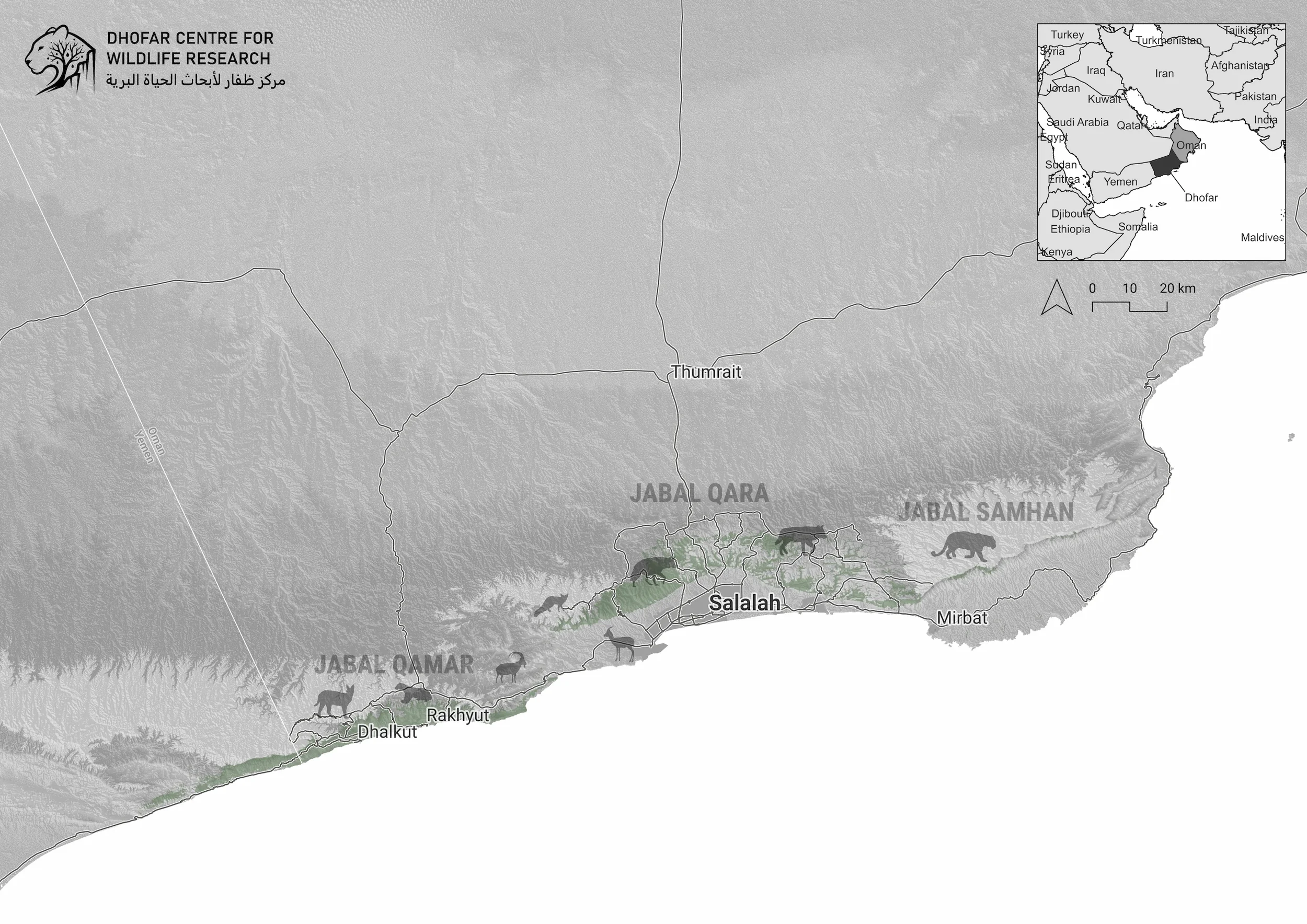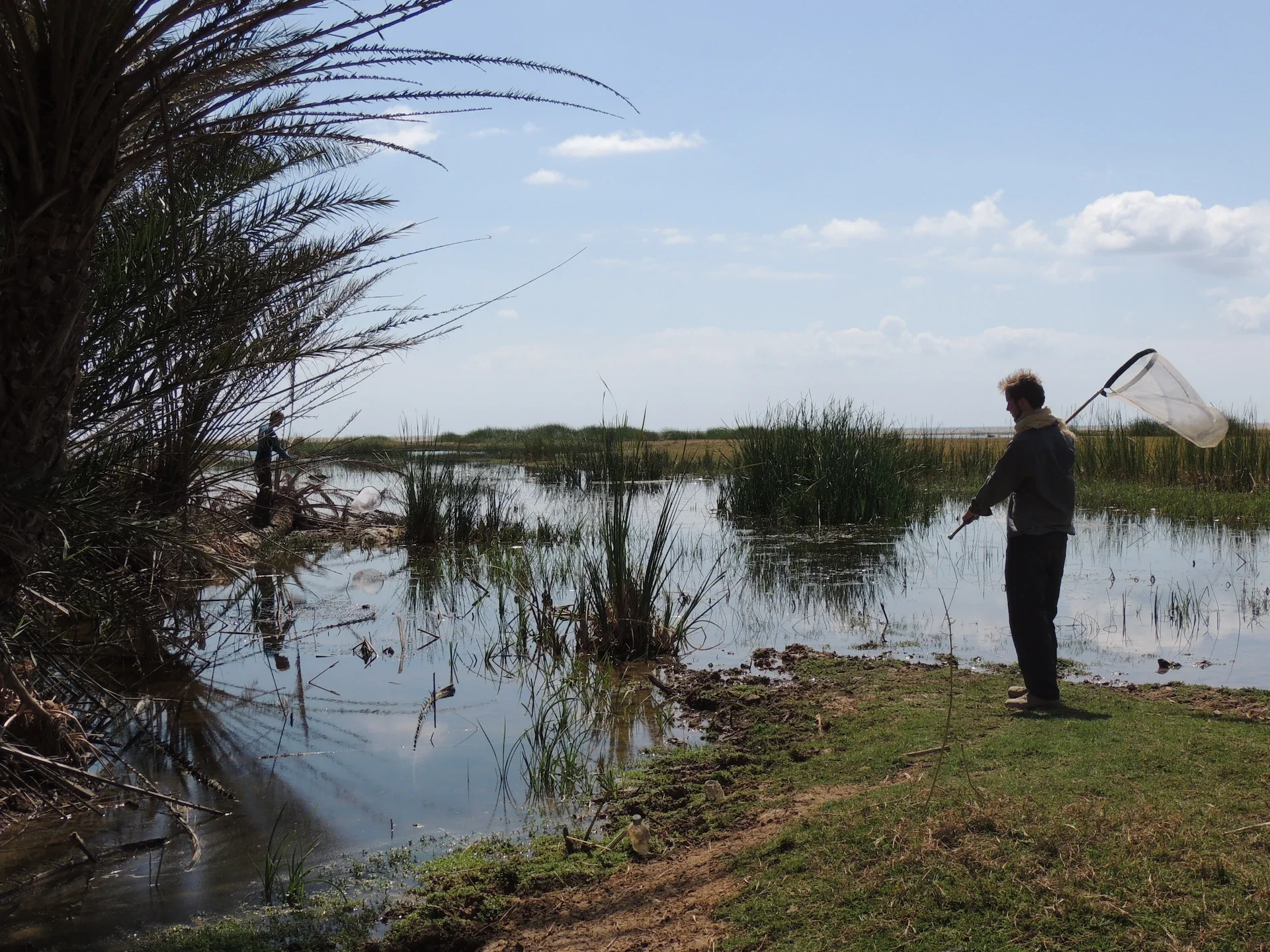
Exploring Nature. Expanding Knowledge.
The Dhofar Biodiversity Monitoring Program will collect vital ecological data with the support of volunteers to assess biodiversity health and provide robust evidence to inform conservation action.
Make an impact
Volunteer With Us
From 2027, we will coordinate the Dhofar Biodiversity Monitoring Program to track the health of Dhofar’s biodiversity. By doing this, we can understand how it responds to conservation and development actions and climate change. Our fully equipped field station will relocate annually, cycling through Dhofar’s three spectacular mountain ranges over a rolling three-year period.
The data we collect, made possible by the dedication of our volunteers, will build a strong evidence base to guide conservation policy and management across the region. Join us and play a part in shaping the future of conservation in South Arabia.
The Dhofar Biodiversity Monitoring Program (DBMP)
Global wildlife populations have already declined by 69% on average since 1970 (WWF’s Living Planet Index), and the twin crises of climate change and biodiversity loss are placing immense pressure on fragile ecosystems. Drylands such as those in the Arabian Peninsula lie at the edge of their ecological limits, making them especially vulnerable to the loss of rare, endemic, and threatened species.
The Dhofar Biodiversity Monitoring Program will employ a suite of biodiversity monitoring methods to track the distribution and size of wildlife populations, in order to understand the impacts of human activities and climate change. This knowledge is essential for making informed decisions about development, natural resource management, and environmental conservation.
From our field station in the mountains, we will employ a range of contemporary monitoring technologies such as camera traps and passive acoustic monitoring, as well as more conventional survey methods, across a broad range of taxonomic groups.
Oman has a proud history of protecting its natural heritage. By continuing this commitment, long-term monitoring can serve as a critical tool for guiding conservation efforts and documenting the recovery and restoration of its unique biodiversity into the future.
In 2027 our field station will be situated in the lush, subtropical Jabal Qamar mountain range. Towering coastal cliffs rise over a thousand meters above the Indian Ocean, while the majestic Wadi Sayq, a vast undisturbed canyon wilderness, harbors some of the richest biodiversity in all of Arabia.
In 2028 our field station will shift to the expansive grasslands and wadi systems of Jabal Qara. Although the biodiversity here faces pressures from growing rural human and livestock populations, these mountains remain a vital corridor for wildlife movement across Dhofar. Despite these challenges, wildlife continues to thrive within the vast wadis and pockets of subtropical cloud forest.
In 2029 our field station will relocate to Jabal Samhan, home to the largest remaining wild population of Arabian leopard. This breathtaking landscape boasts Dhofar's highest peak, descending into lush cloud forest on the steep escarpment towards Mirbat. Stretching inland to the vast gravel desert, epic wadi systems with caves, cliffs and oasis intersect the plateau, many of which have never been explored.
